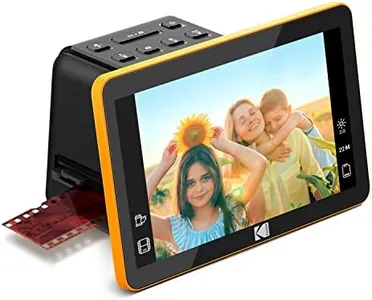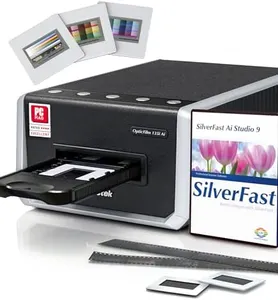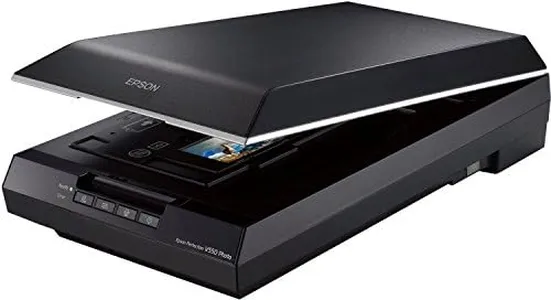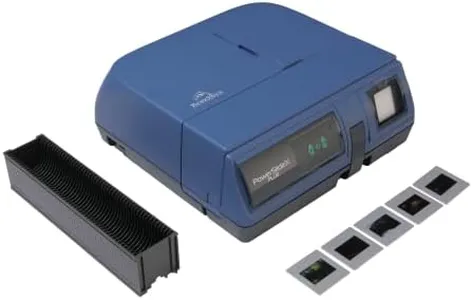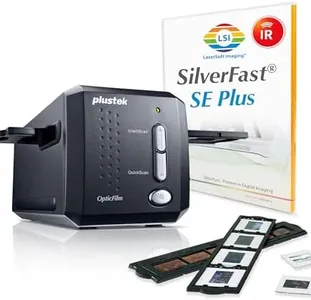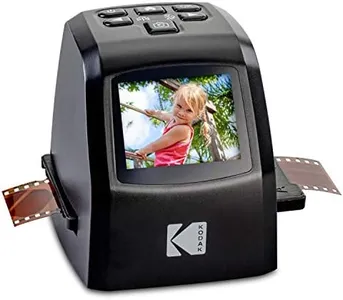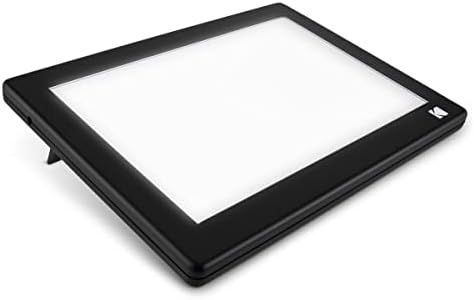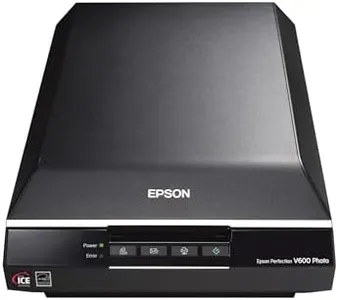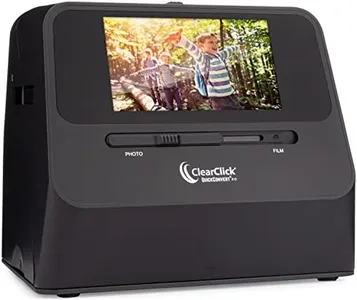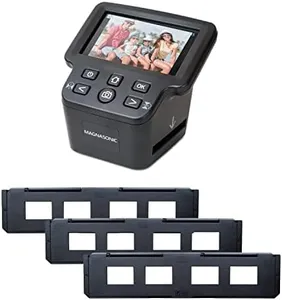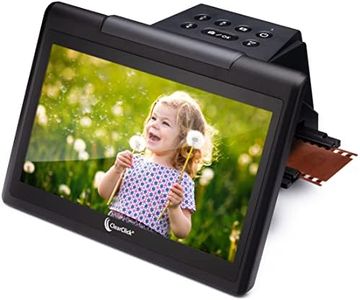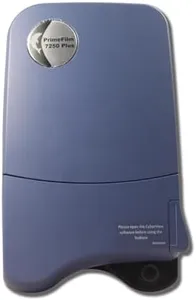10 Best Slide And Negative Converters 2025 in the United States
Our technology thoroughly searches through the online shopping world, reviewing hundreds of sites. We then process and analyze this information, updating in real-time to bring you the latest top-rated products. This way, you always get the best and most current options available.

Our Top Picks
Winner
Plustek OpticFilm 135i Ai - Pro-Quality Film & Slide Scanner with 3rd Generation Lens System, Bundle SilverFast Ai Studio 9 + Advanced IT8 Calibration Target (3 Slide)
Most important from
9 reviews
The Plustek OpticFilm 135i Ai is a high-resolution film and slide scanner designed for users who want professional-quality digital copies of their 35mm films. It offers an impressive 7200 dpi resolution, which means your scanned images can hold a lot of detail. The scanner works well with both Windows and Mac computers, connecting easily via USB. One standout feature is its advanced 3rd generation 5-element lens system, which helps produce sharper images, especially reducing blurriness at the edges and improving dust and scratch detection thanks to its infrared quality enhancer. This makes it great if you have old or delicate film that needs careful handling.
You can scan multiple slides or negatives at once, which saves time if you have a batch to convert, and it supports various 35mm film formats, including panoramic and half-frame, though you might need an extra holder for panoramas. The included SilverFast Ai Studio software and IT8 calibration target help with fine-tuning color accuracy and image editing, but some users might find the software a bit complex if they're new to scanning. While the scanner is fairly compact and lightweight, handling around 6 pounds, it requires a decent computer setup to run smoothly.
The USB connection is standard and reliable, but there’s no wireless option or built-in storage, so you'll need to save your images directly to your computer. If you want a dedicated device that delivers clear, detailed scans from various types of 35mm film and don’t mind spending some time learning the software, this scanner is a solid choice for enthusiasts and professionals alike.
Most important from
9 reviews
Kodak Slide N Scan Max Digital Film Slide Scanner, Black/Yellow (RODFS70)
Most important from
1489 reviews
The KODAK 7" Digital Film Scanner stands out in the category of slide-and-negative converters, particularly for those wanting to digitize their old photo memories with ease. One of its main strengths is the impressive resolution, allowing you to convert negatives and slides into high-quality 22MP JPEGs. The addition of a 7-inch LCD display makes it user-friendly, providing a clear view for previewing and editing images right away, which can be a fun way to share memories with friends and family.
This scanner is versatile, accommodating various film types including 35mm, 126, and 110 negatives, which means it can cater to a wide range of users with different types of old film. The easy-load film inserts make scanning quick and convenient, suitable for those who may not have a lot of experience with similar technology. Plus, the advanced capture software simplifies the editing process, allowing users to enhance images with just a touch of a button.
There are some drawbacks to consider. The scanner relies on SD cards for storage, which are not included, and the maximum capacity of 32GB might not be sufficient for larger projects. Additionally, while it has USB connectivity, the absence of an HDMI cable might limit usage for those who want to connect it directly to a television for display. In terms of speed, it is generally efficient, but scanning multiple images can take time, particularly for those with extensive collections. The KODAK 7" Digital Film Scanner is quite suitable for casual users looking to preserve their photo history with high-quality digital outputs, albeit with some limitations in storage and connectivity options.
Most important from
1489 reviews
Epson Perfection V550 Color Photo, Image, Film, Negative & Document Scanner with 6400 DPI Optical Resolution
Most important from
1413 reviews
The Epson Perfection V550 is a solid choice for converting slides, negatives, and film into high-quality digital images. Its standout feature is the very high 6400 dpi optical resolution, which allows you to create sharp, large prints up to 17 x 22 inches without losing detail. It supports 35mm slides and negatives with a built-in transparency unit, making it ideal for preserving old film memories. Scanning speed is reasonable thanks to ReadyScan LED technology, which also eliminates warmup time and the use of harmful mercury.
The scanner is user-friendly with handy features like auto edge detection that crops multiple photos scanned at once into separate files, saving you time. It also offers basic photo restoration tools such as Digital ICE for removing dust and scratches, along with one-touch fixes to brighten faded pictures. Its 48-bit color depth ensures vibrant and true-to-life colors. Connectivity is straightforward with USB 2.0, a common but not the fastest option available today. It lacks wireless options or memory card slots, so you need to connect it to a computer to save your scans.
For text documents, it includes OCR software to convert scans into editable files, adding versatility. Weighing around 9.6 pounds, it is manageable for a flatbed scanner. Although not the newest model, it remains reliable and well-regarded. This scanner is suitable for hobbyists and photographers wanting detailed film scans and simple restoration, but those needing ultra-fast scanning or wireless features might consider exploring newer models.
Most important from
1413 reviews
Buying Guide for the Best Slide And Negative Converters
When choosing a slide and negative converter, it's important to consider several key specifications to ensure you get the best product for your needs. These devices are designed to digitize your old slides and negatives, preserving your memories in a digital format. Understanding the key features will help you make an informed decision and select a converter that meets your requirements.FAQ
Most Popular Categories Right Now
